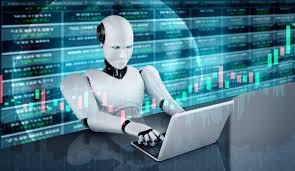
In the ever-evolving landscape of financial markets, technology continues to redefine the way traders operate. Among the myriad innovations, one phenomenon stands out – Forex robots. These automated trading systems have forex robot significant attention, promising to revolutionize the way individuals engage with the foreign exchange market. But what exactly are Forex robots, and how do they work?
Forex robots, also known as expert advisors (EAs), are software programs designed to execute trades on behalf of traders in the foreign exchange market. These robots operate based on predefined algorithms and parameters set by their developers. The primary objective of Forex robots is to eliminate the emotional aspect of trading and to capitalize on market opportunities with speed and efficiency.
At the core of Forex robots lies algorithmic trading – a strategy that relies on mathematical models and technical indicators to analyze market conditions and execute trades automatically. These algorithms can range from simple moving average crossovers to complex machine learning algorithms that adapt to changing market dynamics.
One of the key advantages of Forex robots is their ability to operate 24/7, without the need for human intervention. Unlike human traders, robots can monitor multiple currency pairs simultaneously, scanning the market for potential opportunities and executing trades in a matter of milliseconds. This speed and efficiency enable traders to capitalize on even the smallest price movements, maximizing profit potential.
Moreover, Forex robots are not susceptible to human emotions such as fear and greed, which are often the downfall of many traders. By adhering strictly to predefined rules and parameters, these robots can maintain discipline and consistency in trading, thereby reducing the risk of impulsive decision-making.
Another significant advantage of Forex robots is their ability to backtest trading strategies using historical market data. This allows traders to evaluate the performance of their algorithms under various market conditions and optimize them for better results. Additionally, some advanced Forex robots incorporate machine learning techniques, enabling them to learn from past trades and continuously improve their performance over time.
However, despite their numerous benefits, Forex robots are not without limitations and risks. One of the primary concerns is the potential for over-optimization – a phenomenon where the trading strategy performs exceptionally well on historical data but fails to deliver similar results in live trading due to changing market conditions. Moreover, Forex robots are not immune to technical glitches or errors in programming, which can result in significant financial losses if not properly monitored.
Furthermore, the effectiveness of Forex robots heavily depends on the quality of the underlying algorithm and the expertise of the developer. While some robots may generate consistent profits, others may fail to deliver satisfactory results or even incur losses. As such, it’s essential for traders to conduct thorough research and due diligence before investing in any Forex robot.
In conclusion, Forex robots represent a powerful tool for traders looking to automate their trading activities and capitalize on market opportunities with precision and efficiency. By leveraging algorithmic trading strategies, these automated systems can eliminate the emotional biases inherent in human traders and achieve consistent results in the dynamic world of foreign exchange. However, it’s crucial for traders to exercise caution and vigilance and to understand the risks involved before integrating Forex robots into their trading arsenal. With the right approach and strategy, Forex robots have the potential to revolutionize the way individuals engage with the global currency markets, opening up new avenues for financial success in the digital age.